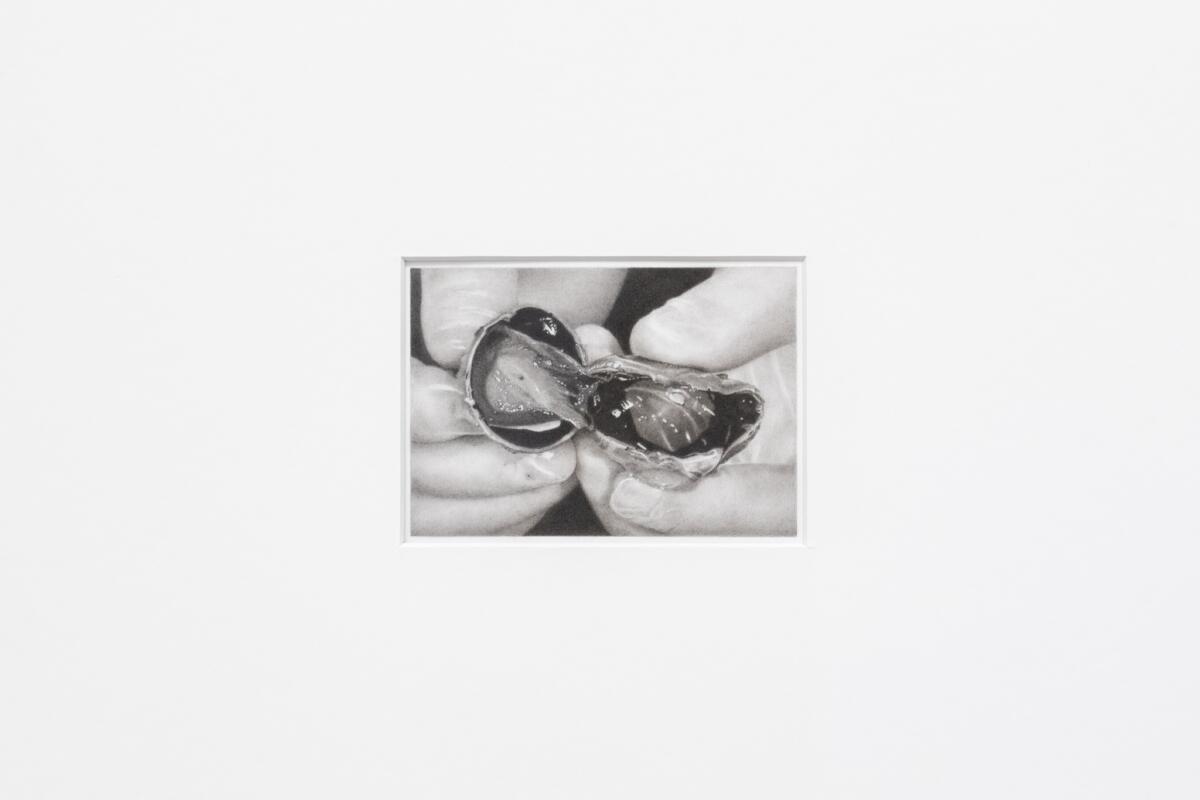
When in the 5th century BC. Zeuxis and Parrhasius argued over who was the better painter, their measure was the skill of deceiving the human, or any other, eye. Gaius Plinius Secundus ( ? – 79, died in the eruption of Vesuvius that buried Pompeii) in his encyclopedic work Naturalis historia recorded their rivalry in a story told about them: Zeuxis painted a grape so faithfully that birds bumped into the still life while trying to peck it up. Parrhasius then challenged his rival to look at his painting behind a curtain. Zeuxis attempted to do so, but the curtain was a realistic fresco on the wall. The pursuit of the most perfect spatial illusion or pun has accompanied two-dimensional representational art from the very beginning, and the method of trompe l’oeil, literally “to deceive the eye”, has its place in contemporary art too. These optical illusions are the result of the desire for perfect control of the artist’s mind and hand, as well as a polemic on the relationship between two- and three-dimensional existence and the mutual translation of their visual or luminous properties.
How does this polemic change when the subject is already a work that is essentially two-dimensional? Jenny Åkerlund’s compelling drawings deal with reproducibility, specifically with photocopies of books or prints. The work on the illusion of three-dimensionality is thus carried out by a machine, but its infallibility is conditioned by the occasional process trace, wear and tear, the addition of source information to the print, or influenced by the properties of the materials used. These barely perceptible cataracts in the image seem to be technical reminiscences of the tiny particles – small changes in the vitreous body, that occasionally or permanently float before our eyes. The illusion Jenny deals with is thus a kind of closed loop – the third dimension returns to the repeatedly reproduced two-dimensional image through the actual, loose sheet of paper that bears Jenny’s drawing.
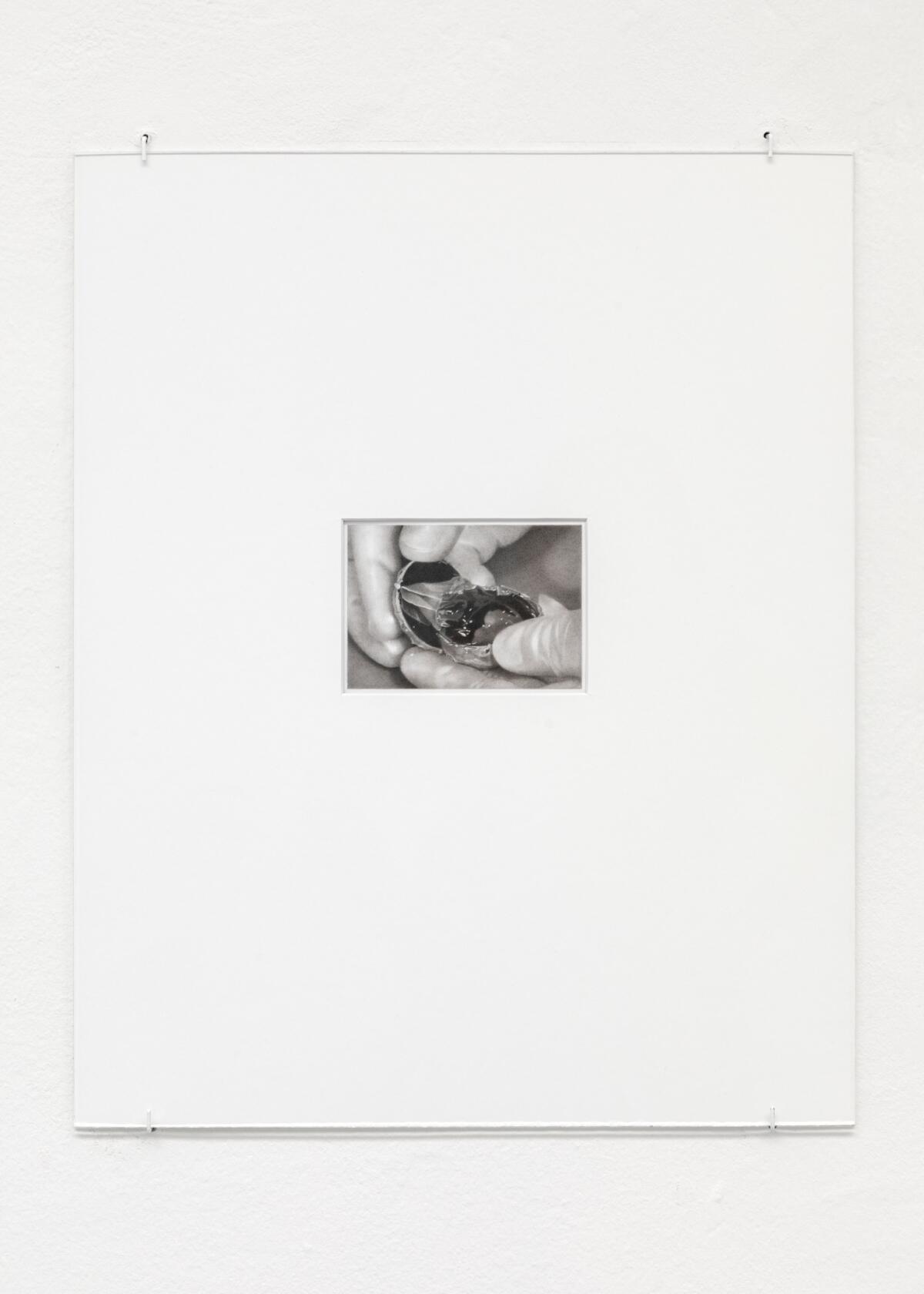
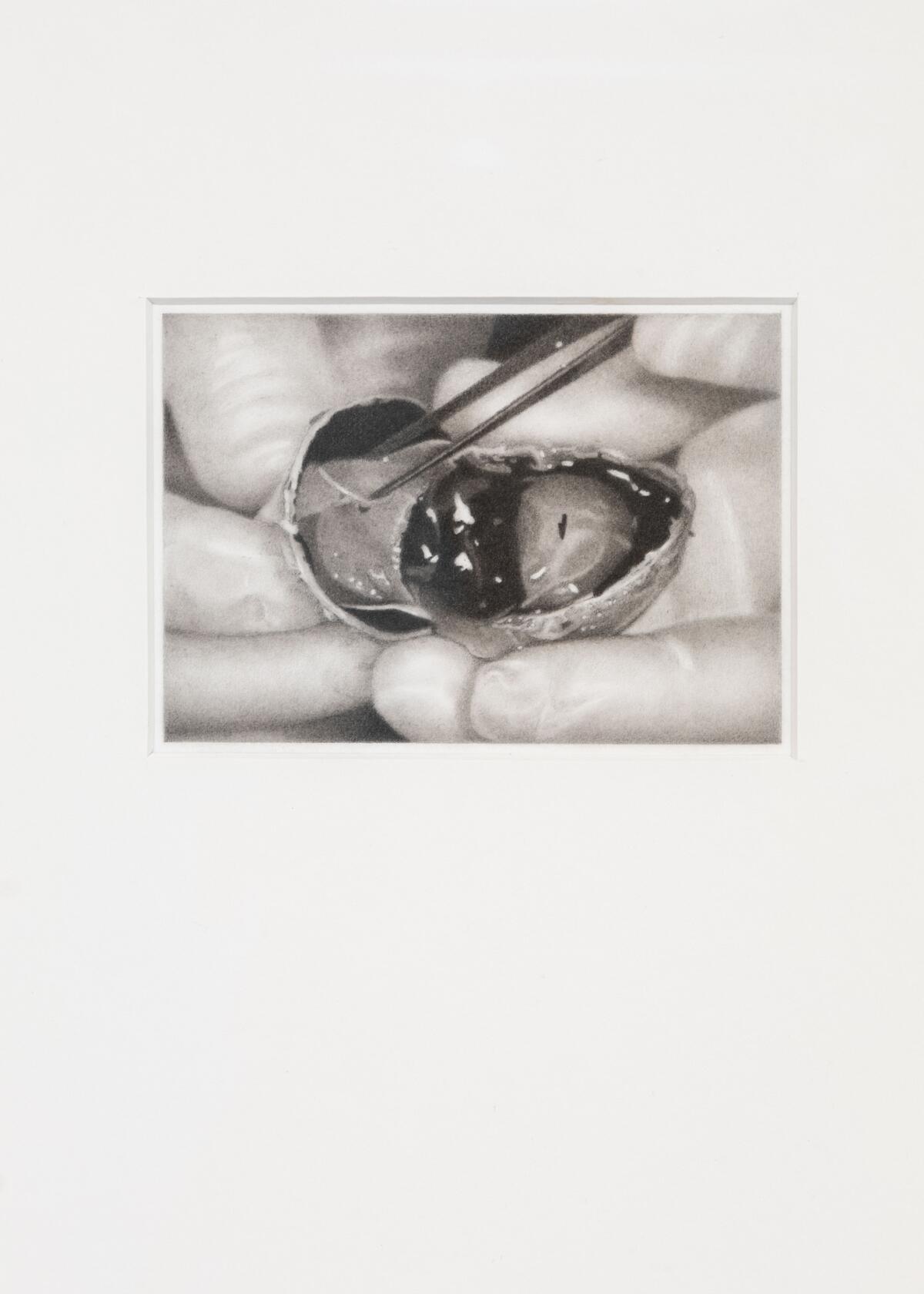
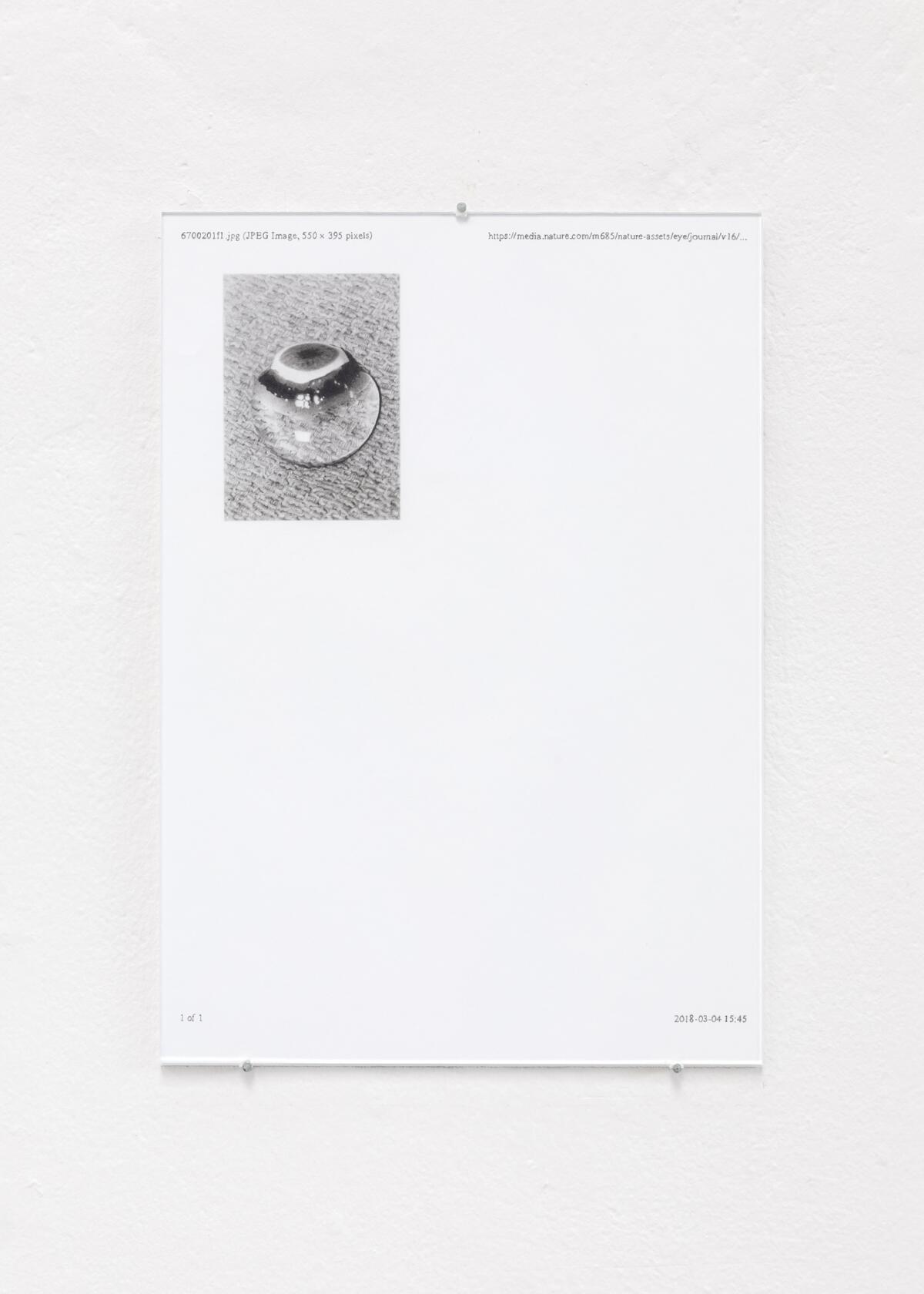
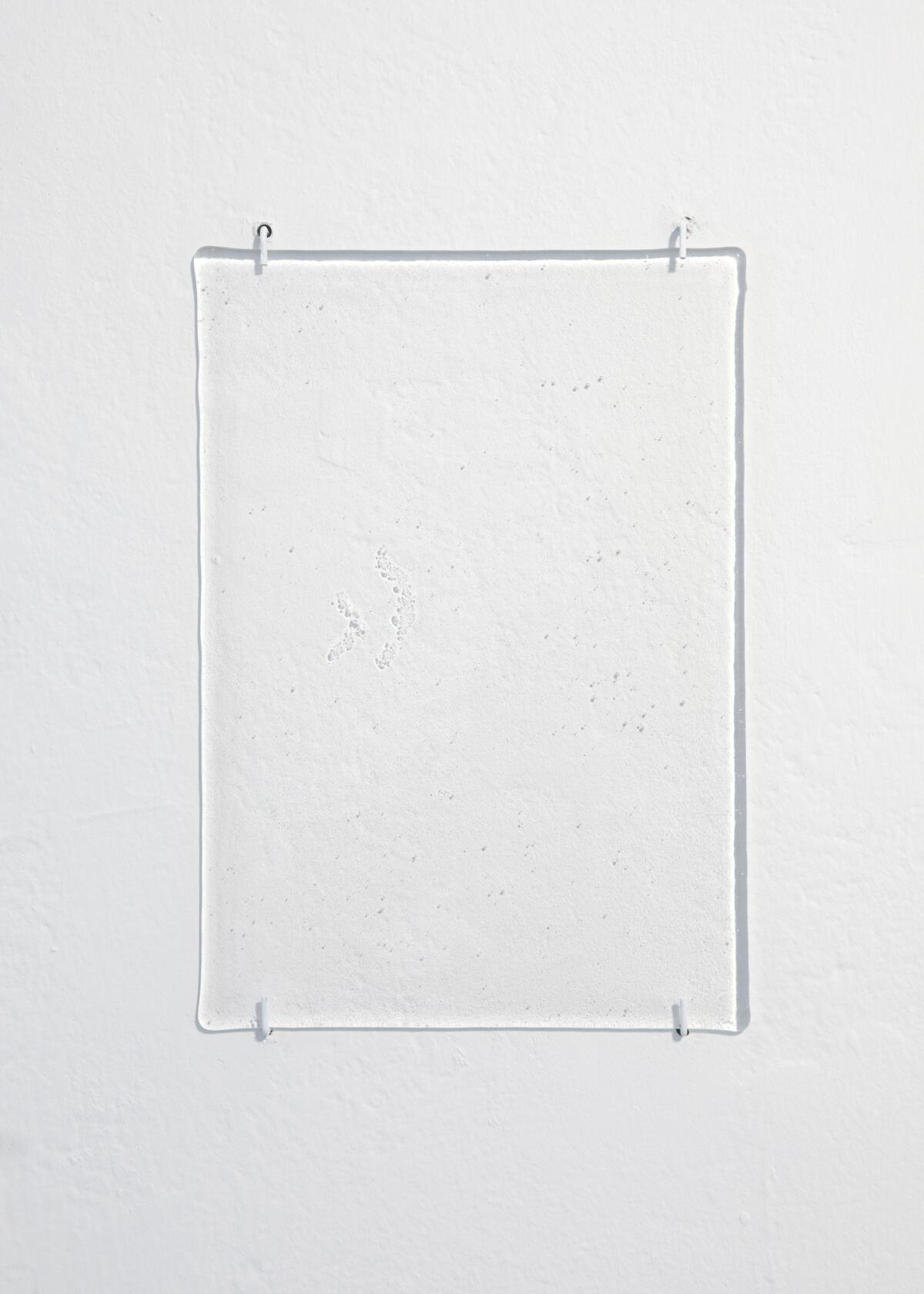
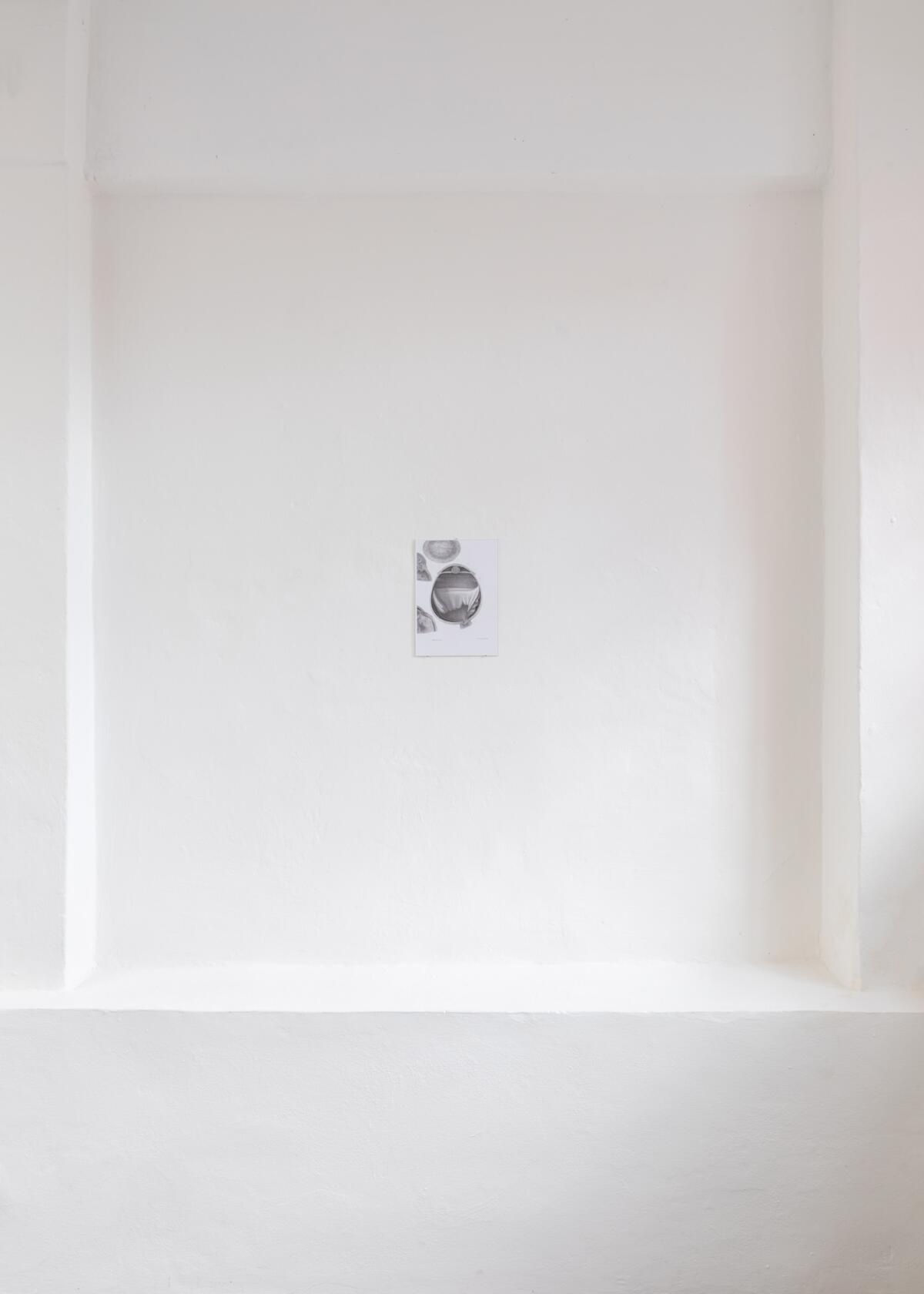
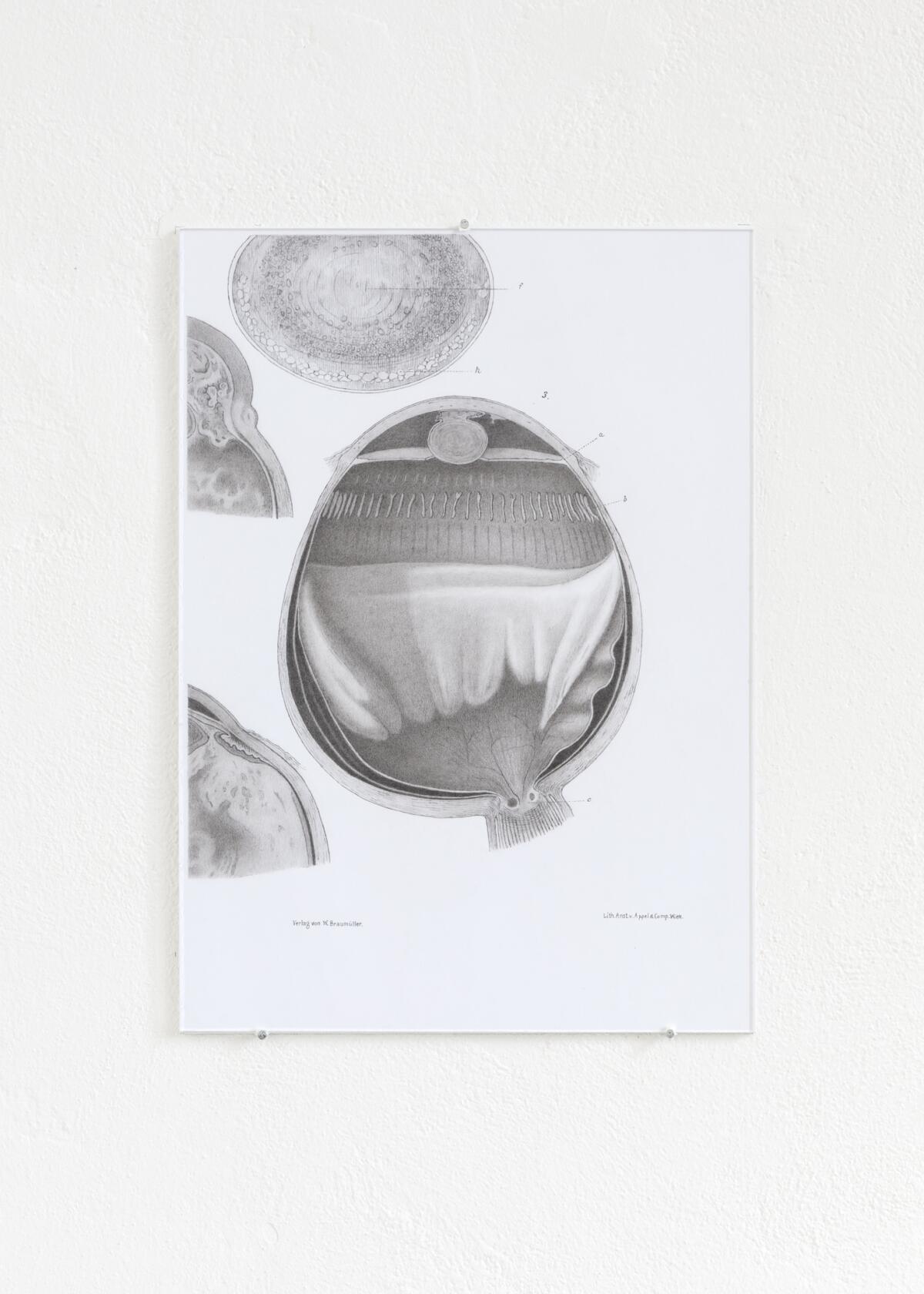
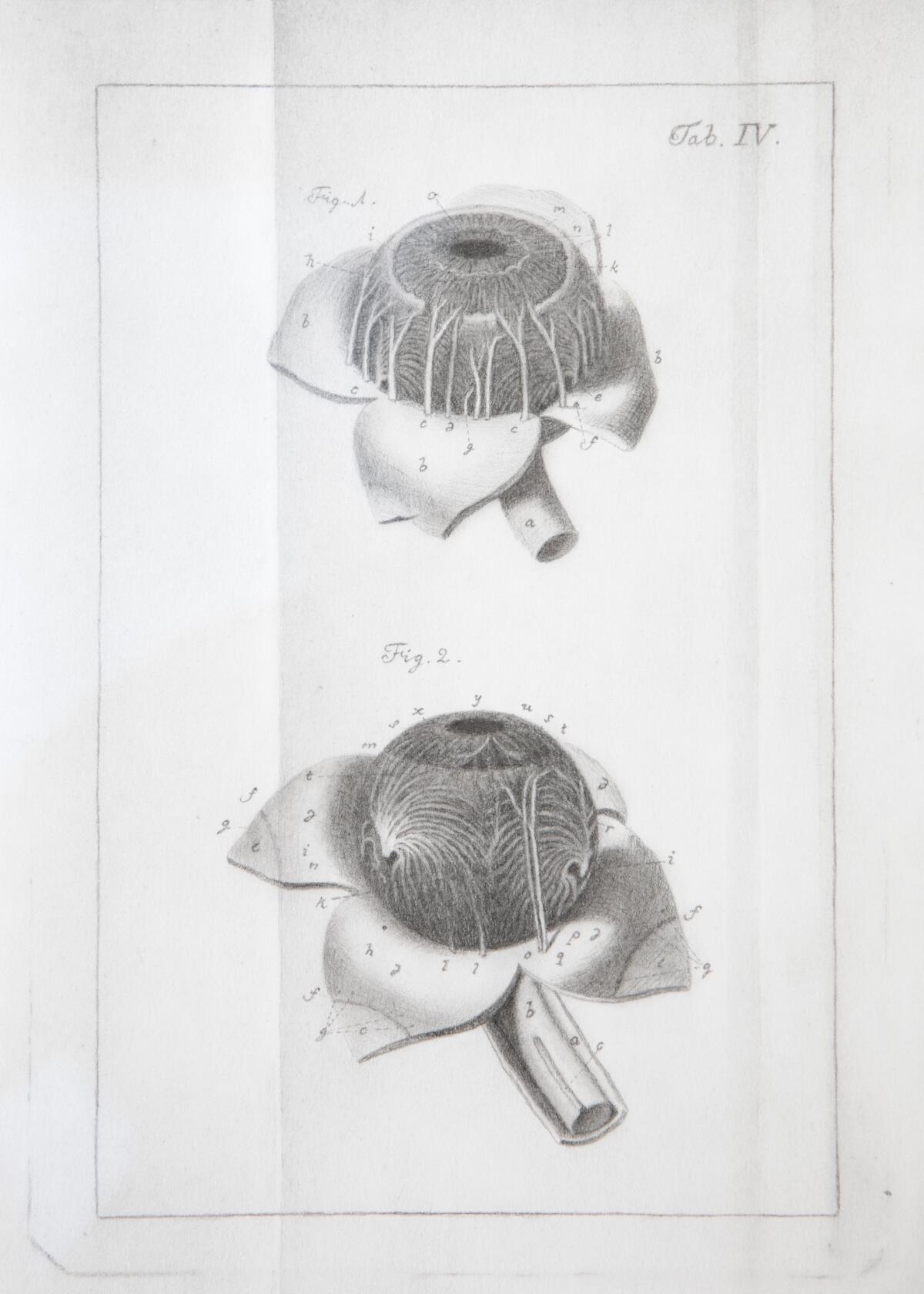
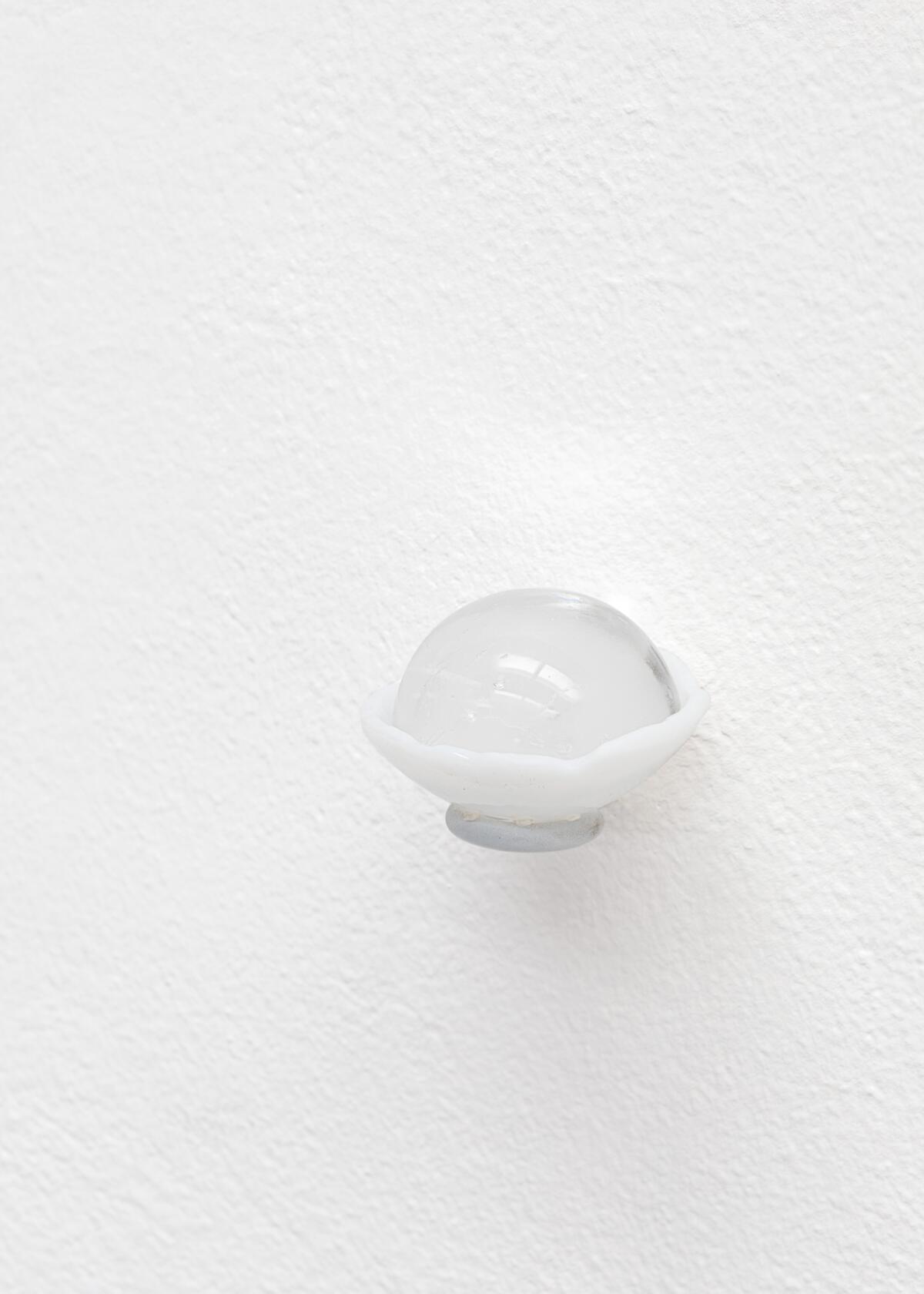
The perfection of the drawings, including the showing-through pages of a book pressed into a photocopier, the dirt from the toner, and their range from scientific illustration to cinematic shots of eye surgery with a hard-to-describe luminous liquid aura, offers the question of whether Jenny has ever attempted to create two Rauschenbergian identical works in a comparison of man and machine. The latter, from her creative position, came up with a more surprising context – as part of her extensive Selenography series, she created pairs of drawings of photocopies from an identical page of the same book, but a of a different edition. Selenography is the science of geographic mapping of the Moon. Looking at Jenny’s tiny glass sculptures, referring to the eye and its vitreous body, the historical perception of the Moon as a screen with its own cataract does not seem so impossible, even from our so called educated position.
Because of her intense interest in the objectivity of representation, astronomy, and the role of human abilities, Jenny has in the past explored the phenomenon of “human computers” – women whose pencil-and-paper calculations have been the basis of wartime operations and the development of NASA research. Her work, an exploration of the transformation of a image-generating human into machine (and vice versa), is a study with an almost chilling subtext in the current context of the uncontrolled development of AI. However, the aura that emanates from the drawings, and the tiny floating traces on the vitreous body that disturb the view of historical scientific books, still seem to be outside the algorithm.
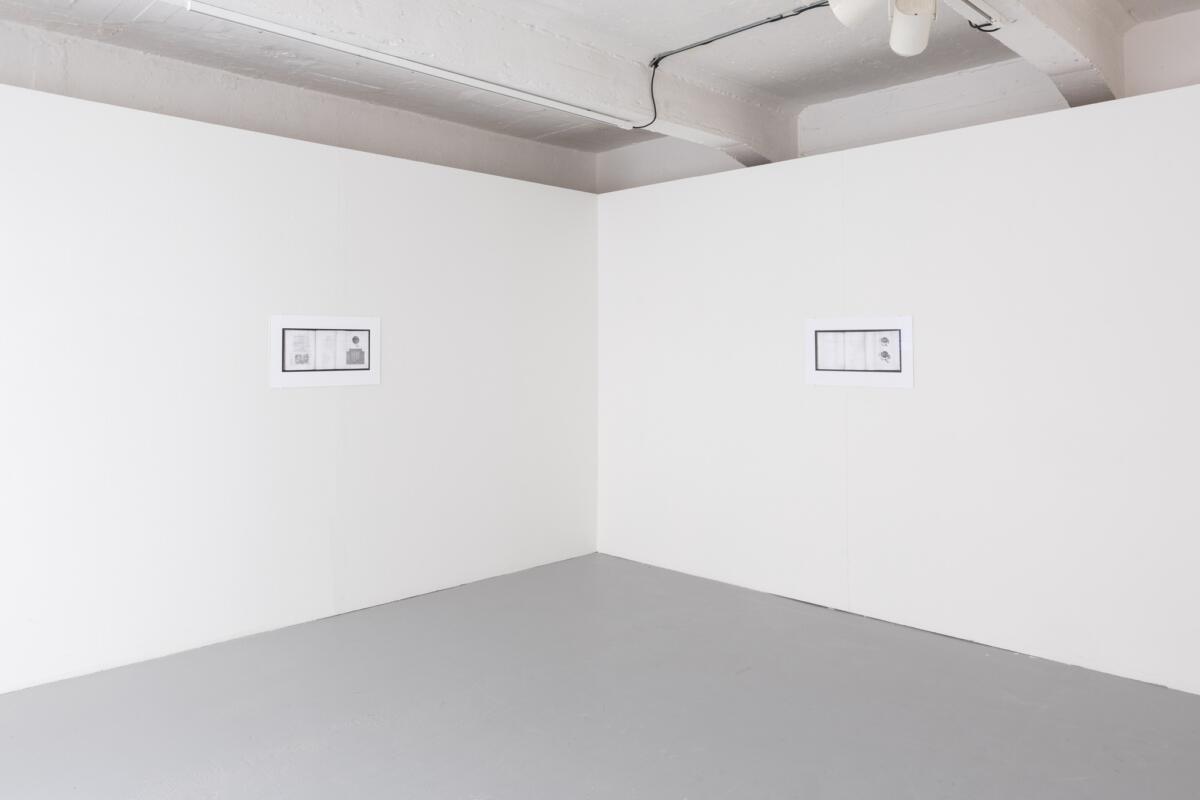
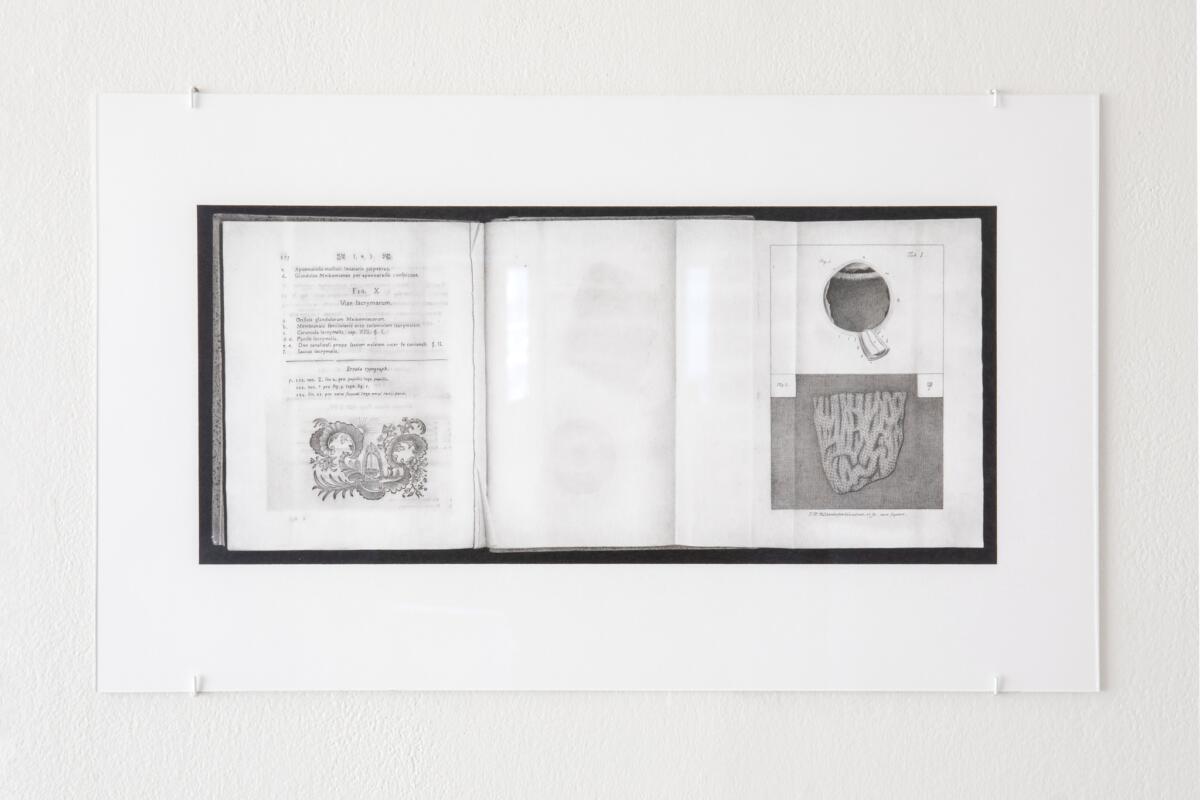
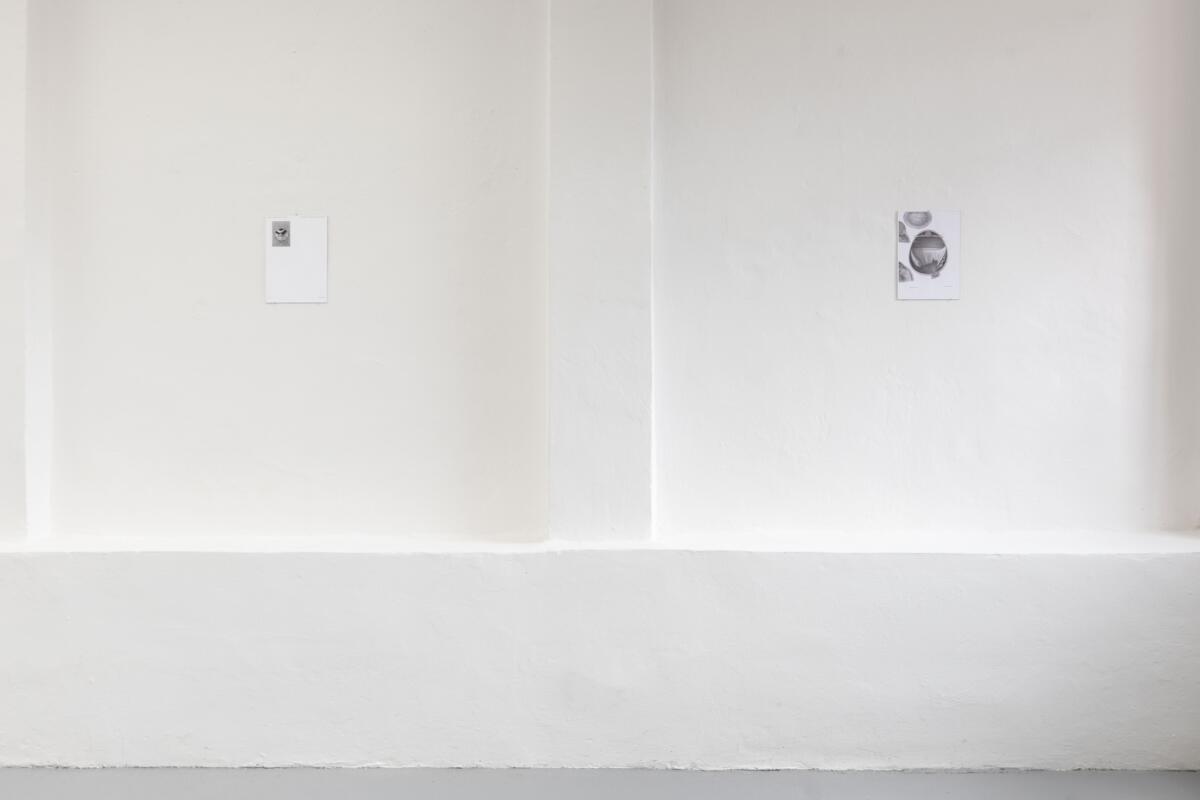
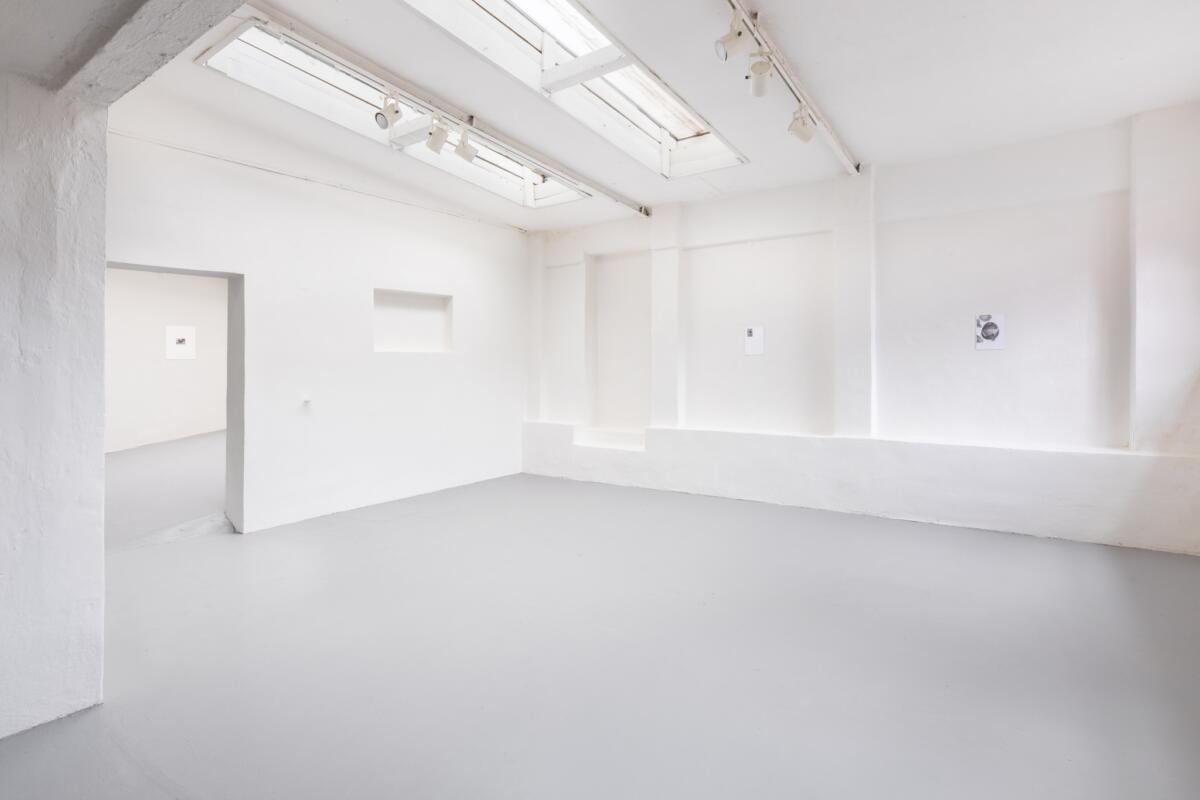
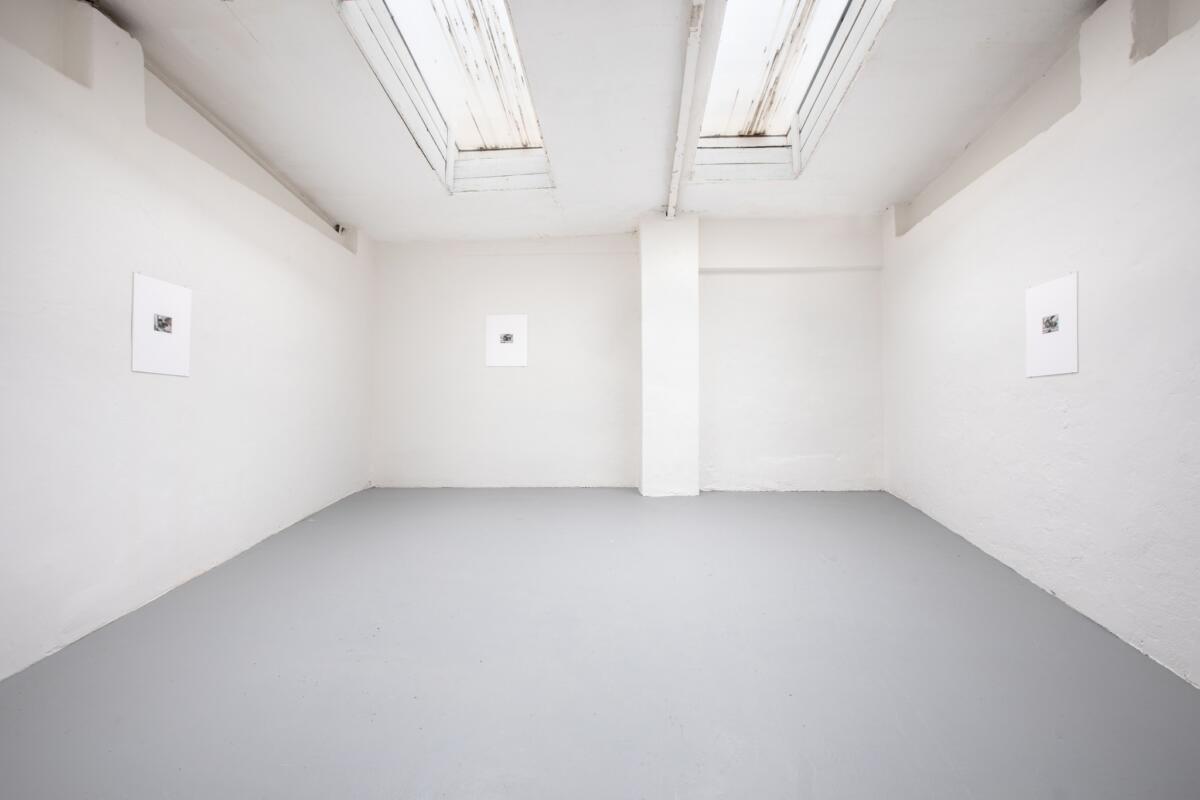
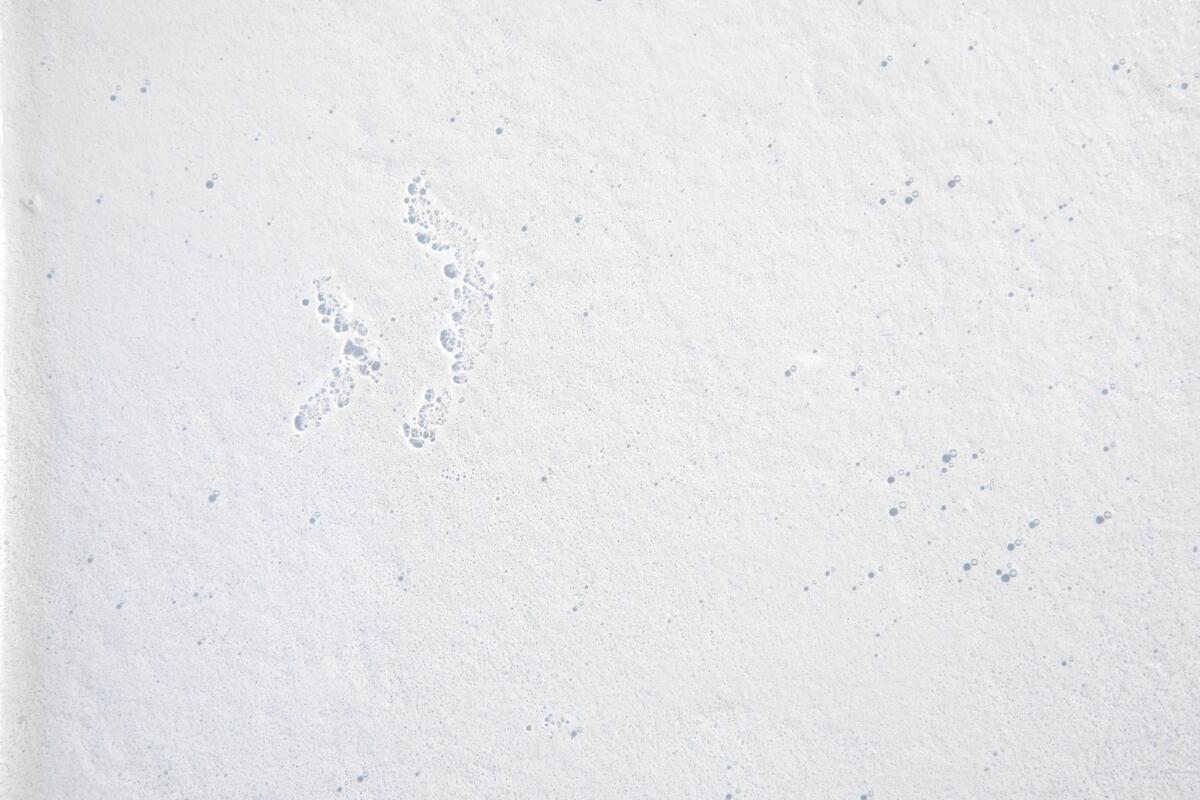
The project is implemented with the financial support of the City of Prague, State Culture Fund of the Czech Republice and the Swedish Arts Grants Committee.
Imprint
| Artist | Jenny Åkerlund |
| Exhibition | Ocular Studies |
| Place / venue | Studio PRÁM |
| Dates | 18 - 30 July, 2023 |
| Curated by | Šárka Koudelová |
| Photos | Anna Pleslová |
| Website | www.jennyakerlund.com |
| Index | Anna Pleslová Jenny Åkerlund Šárka Koudelová Studio PRÁM |
